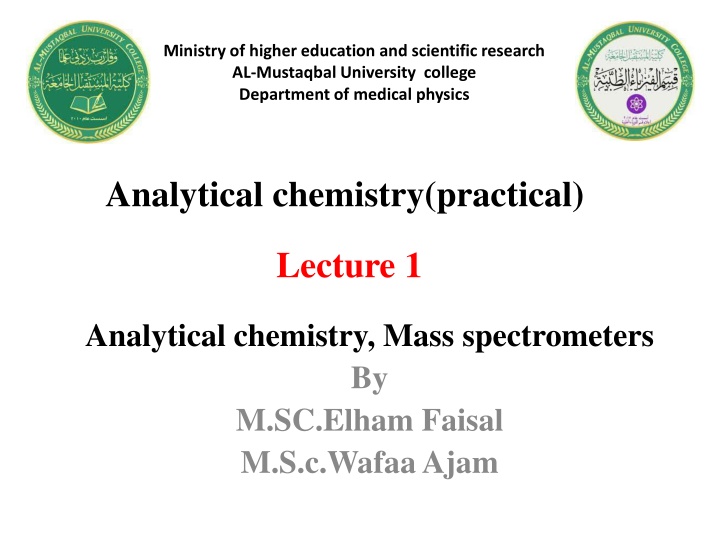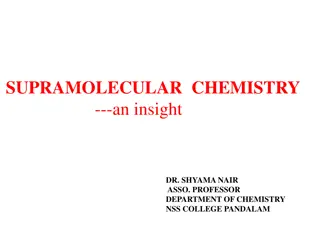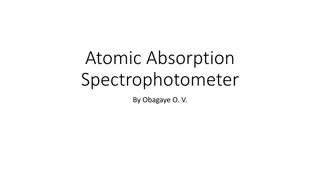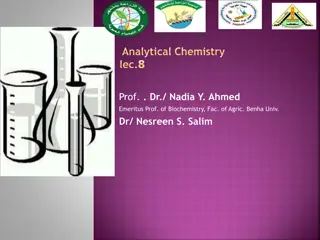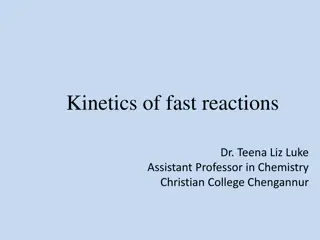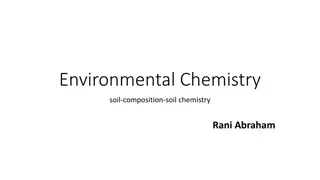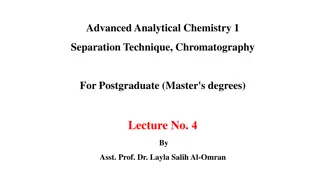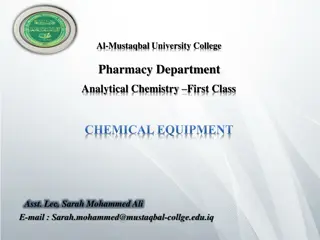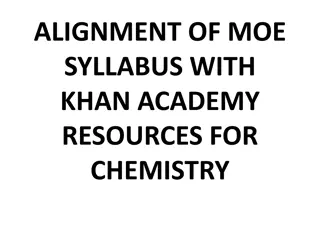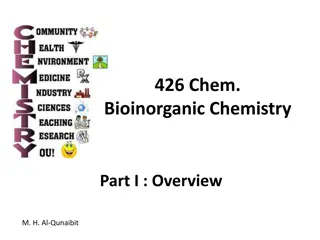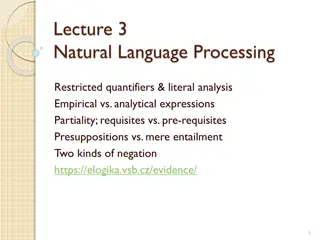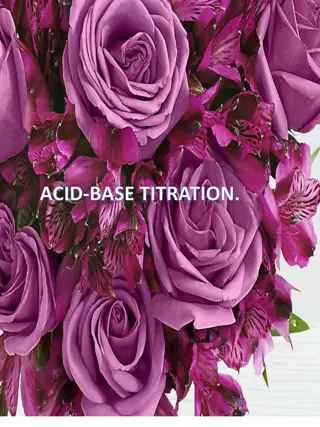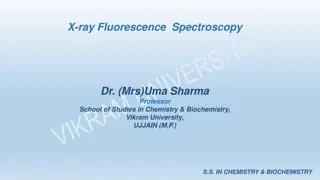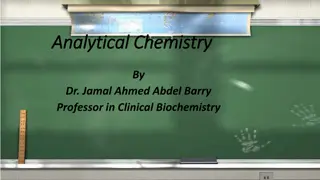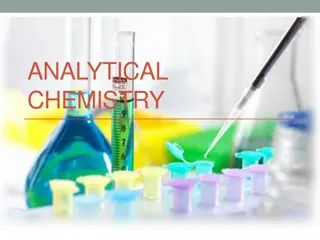Analytical Chemistry and Methods
Analytical chemistry involves the separation, identification, and quantification of matter using classical and modern methods with scientific instruments. Classical methods include flame tests and acid tests, while instrumental methods utilize equipment like mass spectrometers and chromatographs to analyze substances. Both qualitative and quantitative analyses play a crucial role in determining the identity and concentration of analytes in samples.
Download Presentation

Please find below an Image/Link to download the presentation.
The content on the website is provided AS IS for your information and personal use only. It may not be sold, licensed, or shared on other websites without obtaining consent from the author.If you encounter any issues during the download, it is possible that the publisher has removed the file from their server.
You are allowed to download the files provided on this website for personal or commercial use, subject to the condition that they are used lawfully. All files are the property of their respective owners.
The content on the website is provided AS IS for your information and personal use only. It may not be sold, licensed, or shared on other websites without obtaining consent from the author.
E N D
Presentation Transcript
Ministry of higher education and scientific research AL-Mustaqbal University college Department of medical physics Analytical chemistry(practical) Lecture 1 Analytical chemistry, Mass spectrometers By M.SC.Elham Faisal M.S.c.WafaaAjam
Analytical chemistry involves the separation, identification, and the quantification of matter. It involves the use of classical methods along with modern methods involving the use of scientific instruments. Analytical chemistry involves the following methods: The process of separation isolates the required chemical species which is to be analysed from a mixture. The identification of the analyte substance is achieved via the method of qualitative analysis. The concentration of the analyte in a given mixture can be determined with the method of quantitative analysis.
Methods Used in Analytical Chemistry The methods used to determine the identity and the quantity of the analytes in the field of analytical chemistry can be broadly divided into: 1- classical methods 2- ninstrumental .
1. Classical Methods There exist many classical methods of checking for the presence or absence of a particular compound in a given analyte. These examples are of classical method of qualitative analysis: 1. The acid test for gold: The mark is tested by applying nitric acid, which dissolves the mark of any item that is not gold
3-Flame tests: These can be used to check for the presence of specific elements in an analyte by exposing it to a flame and observing the change in the color of the flame. A flame test is a qualitative analysis used by the chemist to identify the metal and metalloid ion in the sample. Not all metal ions emit color when heated in the gas burner.
2. Instrumental Methods Examples of analytical instruments include: o Mass spectrometers. o Chromatographs (e.g. GC and HPLC). o Titrators, Spectrometers (e.g. AAS, X-ray, and fluorescence). o Particle size analyzers. o Rheometers elemental analyzers (e.g. salt analyzers, CHN analyzers) o Thermal analyzers.
Basic principle of mass spectrometry (MS) The basic principle of mass spectrometry (MS) is to generate ions from either inorganic or organic compounds by any suitable method, to separate these ions by their mass-to-charge ratio (m/z) and to detect them quantitatively by their respective m/z and abundance. qualitatively and
Mass spectrometry (MS) Mass chemistry technique that helps identify the amount and type of chemicals present in a sample by measuring the mass-to-charge ratio and abundance of gas-phase ions. In this instrumental technique, the sample is converted to rapidly moving positive ions by electron bombardment and charged particles are separated according to their masses. Spectrometry (MS) is an analytical
A mass spectrum is a plot of relative abundance against the ratio of mass/charge (m/e). The relative abundance of an isotope is the percentage of atoms with a specific atomic mass found in a naturally occurring sample of an element. Isotopes are atoms of the same element with different numbers of neutrons. Because they contain different numbers of neutrons, isotopes have different atomic masses. These spectra are used to determine the elemental or isotopic signature of a sample, the masses of particles and of molecules, and to elucidate the chemical structures of molecules and other chemical compounds.
Components of mass spectrometry (MS) The instrument consists of three major components: Ion Source: For producing gaseous ions from the substance being studied. Analyzer: For resolving the ions into their characteristics mass components according to their mass-to-charge ratio. Detector System: For detecting the ions and recording the relative abundance of each of the resolved ionic species. In addition, a sample introduction system is necessary to admit the samples to be studied to the ion source while maintaining the high vacuum requirements (~10-6 to 10-8 mm of mercury) of the technique; and a computer is required to control the instrument, acquire and manipulate data, and compare spectra to reference libraries.
Instrumentation and Steps of Mass Spectrometry (MS)
